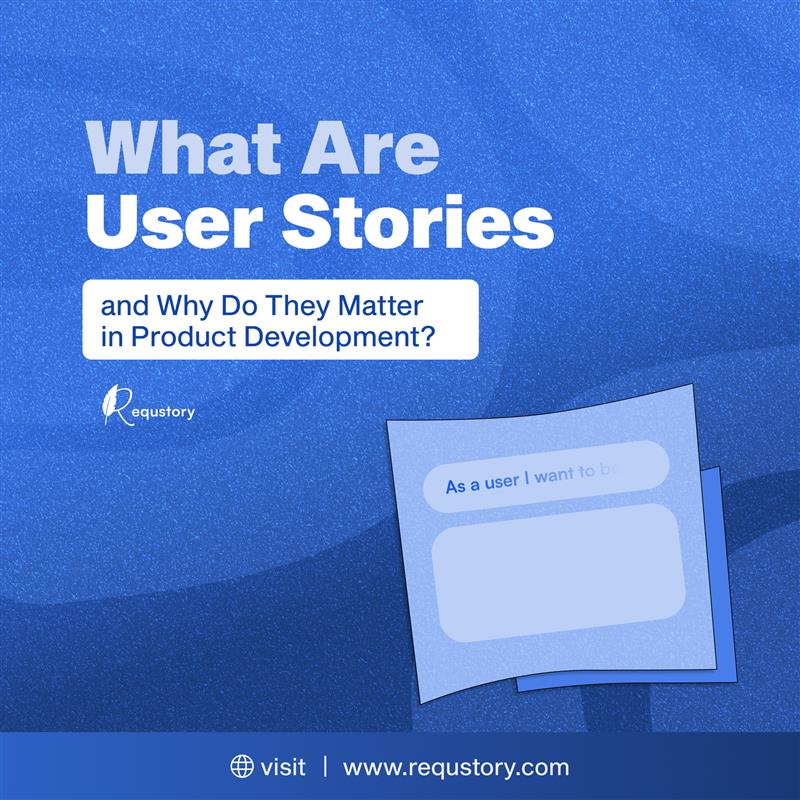Introduction
User stories are a cornerstone of modern product development, bridging the gap between technical teams and stakeholders by describing features from the end-user’s perspective. In this blog, we’ll delve into what user stories are, their critical role in the product development lifecycle, and how they can significantly enhance collaboration and outcomes.
What Are User Stories?
User stories are short, simple descriptions of a feature or functionality told from the perspective of the end user. They typically follow a format such as:
As a [user role], I want to [action] so that [benefit].
For example: As a customer, I want to track my order status so that I can know when to expect delivery.
User stories are widely used in Agile development frameworks to ensure that the team’s focus remains user-centric.
Why Do User Stories Matter in Product Development?
User stories aren’t just about documentation; they’re tools that foster communication, prioritize user needs, and guide product development. Here’s why they’re vital:
1. Enhance Collaboration
User stories create a common language that developers, designers, and stakeholders can use to discuss requirements. This reduces misunderstandings and ensures everyone is aligned.
2. Prioritize User Needs
Focusing on what the user wants and why they want it keeps the team’s priorities aligned with delivering value to the customer.
3. Facilitate Incremental Development
By breaking down large features into smaller, manageable user stories, teams can work incrementally and deliver value faster.
Key Components of a User Story
Acceptance Criteria
These define the conditions that must be met for the user story to be considered complete. For example, for the order tracking story, acceptance criteria might include:
The customer can view the status of their order.
The system sends notifications for any status updates.
Story Points
Teams often assign story points to user stories to estimate the effort and complexity involved in implementing them.
How to Write Effective User Stories
1. Understand Your Users
Research your target audience to understand their pain points, behaviors, and goals. Use tools like user personas to guide this process.
2. Keep It Simple
User stories should be concise and focused. Avoid technical jargon or overly detailed descriptions.
3. Involve the Team
Collaborate with your team to refine and validate user stories. Team involvement ensures that the stories are actionable and realistic.
Common Mistakes to Avoid
Writing Stories That Are Too Broad
Overly general stories can be vague and difficult to implement. Break them down into smaller, specific tasks.
Ignoring the “Why”
A story without a clear benefit to the user can mislead the development team and result in features that don’t provide real value.
Skipping User Feedback
User stories should evolve based on feedback. Neglecting this can lead to outdated or irrelevant requirements.
Tools and Techniques to Manage User Stories
User Story Mapping
This visual method organizes user stories in a way that highlights the overall user journey. It helps teams prioritize and plan work effectively.
Digital Tools
Platforms like Jira, Trello, and Requstory offer intuitive ways to create, organize, and manage user stories. These tools ensure seamless collaboration and tracking.
How Requstory Simplifies User Stories
Managing user stories effectively can be challenging, but tools like Requstory make it easier. With AI-powered features, Requstory helps teams create, organize, and visualize user stories effortlessly. It’s designed to support Agile workflows, making collaboration seamless and efficient.
Learn more about how Requstory can revolutionize your product development process by visiting Requstory.com.
FAQs
What is the difference between a user story and a use case?
A user story is a short description of a feature from the user’s perspective, while a use case is a more detailed document that outlines the steps a user takes to achieve a specific goal.
How do user stories fit into Agile development?
In Agile, user stories are used to define features in a user-centric way. They help prioritize work, guide development, and ensure the delivery of valuable outcomes in each iteration.
What are the benefits of using Requstory for managing user stories?
Requstory simplifies user story management with AI-powered tools, ensuring stories are clear, well-organized, and aligned with Agile principles. It also facilitates collaboration and improves team productivity.

